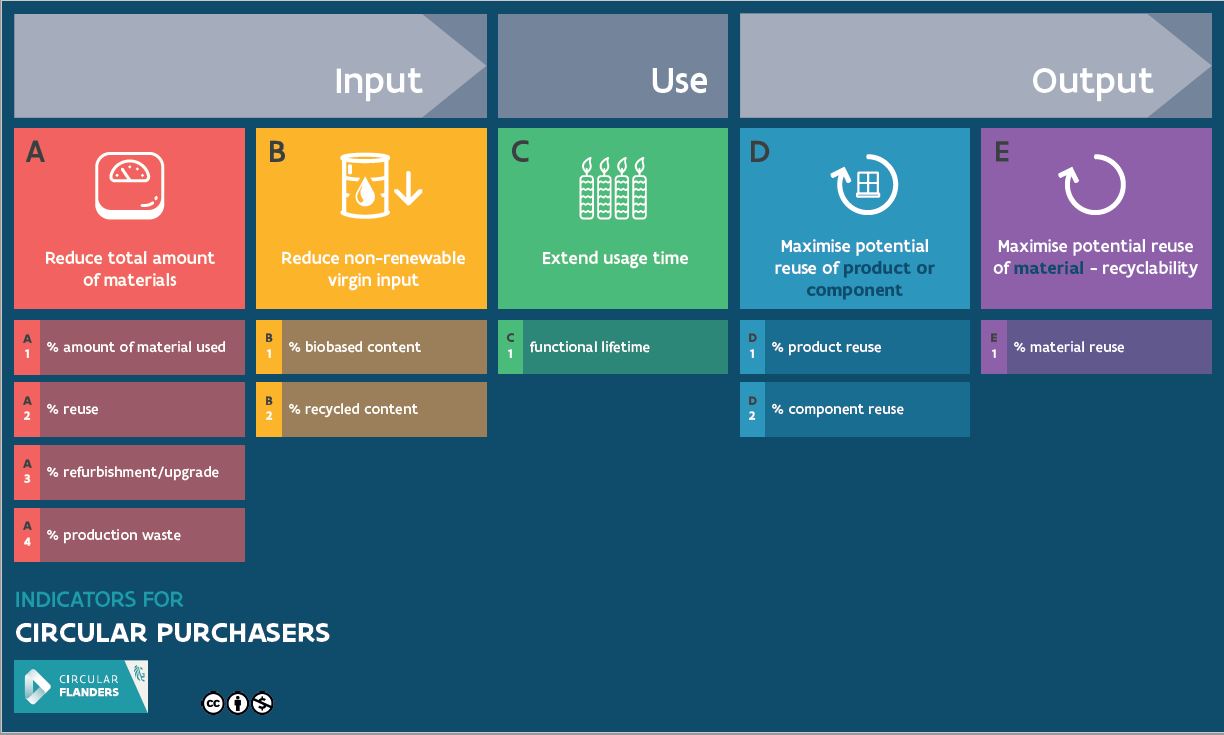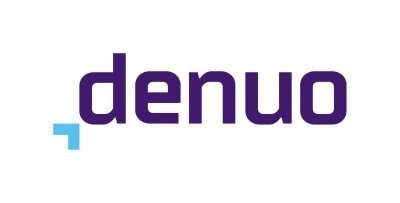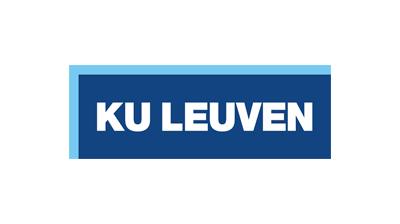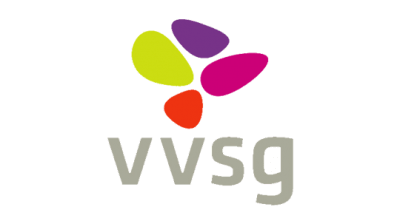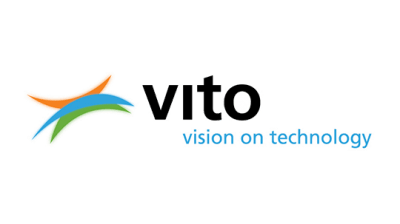How to choose the right tool for your circular procurement
We use a very broad definition of 'tools': everything that can help you with circular procurement and measuring its impact.
- The circular ambition chart, facilitates deciding on internal circular ambitions and communicating them externally.
- Criteria tools provide inspiration for your tender.
- Life cycle costing tools help determine the most economically adventagious offer (MEAT) offer based on the total life cycle cost.
- The indicator chart helps to map the impact of you circular procurement.
- Labels in certificates can provide security when awarded by an independent party.
Criteria tools
Use these tools that offer written criteria, mainly as inspiration. Consider which parts are useful and relevant to your context and product group. In addition, dialogue with the market is very important. After all, the suppliers are best informed about recent innovations in their product group. Most criteria tools were developed with a view to sustainable procurement, but we see that circularity is increasingly taken up.
- The Green Public Procurement Criteria by the European Commission; comprehensive criteria for different product groups for public procurement
- The SPP Criteria tool by Rijkswaterstaat (NL); generates specific sustainable public procurement criteria for various sustainable public procurement product groups at three levels of ambition.
Life Cycle Costing Tools
European public procurement legislation makes it possible to use Life cycle cost (LCC) to determine the most economically advantageous tender (MEAT). This LCC can consist of the Total Cost of Ownership (TCO), costs for externalities or a combination of both. It is important to indicate in the tender which information the bidders must provide. These must be providable with reasonable effort. It must also be stated which method is used to calculate the LCC on the basis of this data. This calculation must be based on objectively verifiable and non-discriminatory criteria. The cost model must be available to the bidder free of charge.
- A Total Cost of Ownership analysis (TCO) often gives a very different picture than a comparison on acquisition cost alone. TCO also maps out all costs during the useful life. The acquisition costs, operating costs (such as energy consumption and other resources), maintenance and repair costs, taxes and the costs or revenues associated with the end of use.
- Life cycle costs (LCC) can also include environmental and social costs (externalities) associated with the product, service or work during the life cycle. These are, for example, the costs of the emission of greenhouse gases and toxic substances. The European Commission has developed an LCC tool for five products.
- Life Cycle Assessment (LCA) is a method to determine the total environmental impact of a product during its life cycle. With the Environmental Footprint methods recommendation, the European Commission wants to bring more clarity to the determination of LCAs.
Indicator chart
This indicator chart is in line with the circular ambition chart. By choosing and monitoring relevant indicators, you can map out the impact of your circular procurement. It also makes clear whether your ambitions are realistic and whether adjustments are necessary in a subsequent tender. Ideally, measurements should be taken at these moments:
- Classic, linear purchase as a baseline - if possible
- Circular ambitions as they were recorded in your organization and/or included in your specifications
- Values in the chosen circular offer or contract
- Final realized values at execution
If you need data from your supplier for these indicators (whether or not via a third party), be sure to include this in your specifications.
Standards, certificates and labels
A standard (or norm) includes recognized agreements, specifications or criteria for products, services or working methods. Standards can be established within a company or consortium - or by a recognized standardization organization, such as ISO. Naturally, a standard from an independent party has more value than an individual, internal standard for circular procurement.
A certificate may be issued by a third party if an organization or company conforms to a certain standard. This usually results in a product label issued by the third party.
Keep in mind that obtaining independent labels and certificates is often expensive. By requiring it in your specifications, you might exclude start-ups and SMEs. While these are often frontrunners in the innovation of circular products and services. You can overcome this by allowing the label to be presented only after the contract has been awarded or by excluding start-ups and SMEs from the obligation.
Tools for circular procurement
On the Circular FlandersTools and Platforms webpage you will find a selection of tools for circular procurement.
On the website of the Interreg NSR project ProCirc you will find video pitches about the MRA circular procurement roadmap, Madaster, GDCI e-learning, CO2 performance ladder, PRP, the MVI criteria tool and Totem.
This document is created as a manual for the Procurement Transformation Workshop. This workshop can be set up by organisations who want to rethink their procurement processes and integrate circularit…
This guidance is written for procurers and affiliated functions. It offers a general introduction to the topic of circular procurement. It guides you to the many resources that are available, and hel…
